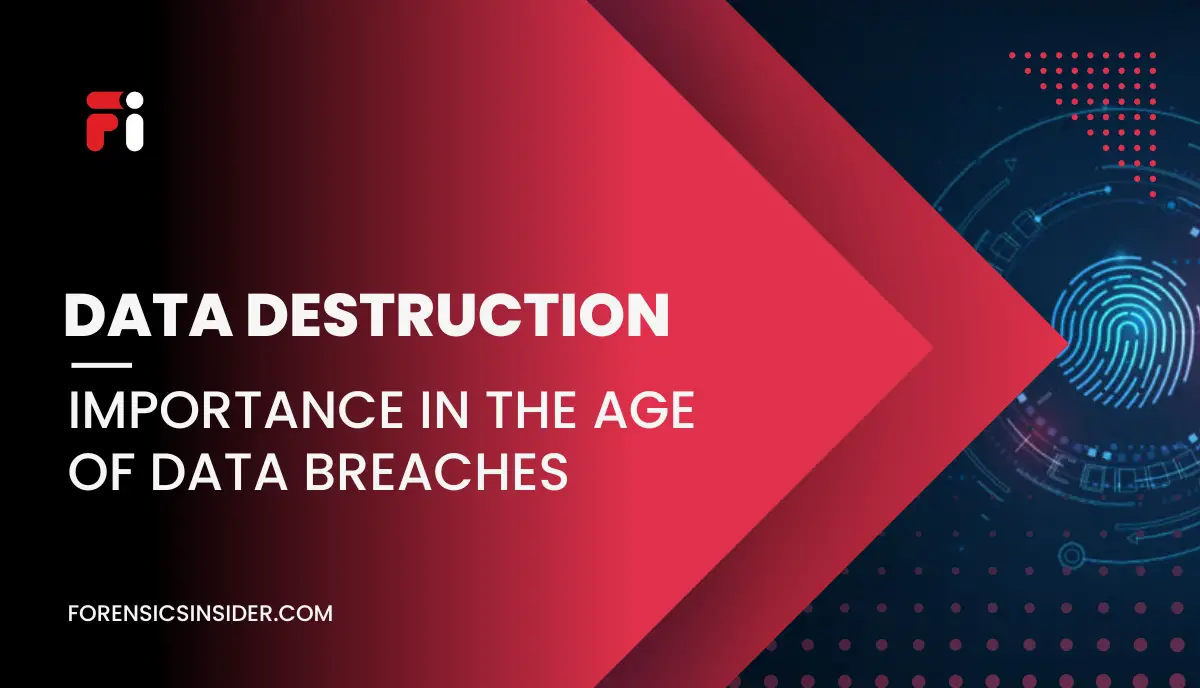You may have barely heard of computer forensics. It is a field of investigation that has become essential in this digital era because it is used to uncover the truth of criminal activity or other scams related to computers or related devices.
But do you know what exactly computer forensics means? In this comprehensive guide, you will be able to know in-depth knowledge of computer forensic. This guide will provide you with an overview of computer forensics uses applications, and their importance. So if you are curious to know about the digital investigative world or want to learn how to uncover the digital truth, then stay until the end of the blog.
What is Computer Forensics?
Computer forensics is a field of investigation that extracts data from a computer device and stores it to present in the law of court for further proceedings. It is a branch of digital forensics. It is a process where a forensics expert uses scientific techniques to investigate, collect, examine, and store data in such a way that it is legally admissible.
Digital Forensics experts use tools and techniques to recover data from digital devices like computers, smartphones, and storage devices. These data are then analyzed for further investigation processes.
Computer Forensics is used in various areas like criminal investigation, civil investigations, corporate investigations, or digital crimes like hacking, cyberstalking, intellectual property theft, etc.
Types of Computer Forensics
There are different types of computer forensic areas of investigation. Some of the important types are mentioned below:
1. Disk Forensics
Disk Forensics includes data recovery from hard drives, external storage devices, or other disk-based storage devices. This type of forensics includes file recovery, identification of deleted files, and analysis of file timestamps
2. Network Forensics
Another type of computer forensics is network forensic. It includes the investigation of the network over which that has been transferred from one source to another source. Networks include internet traffic, emails, or other types of communication mediums. Network forensics aims to detect the source of an attack and track the activity of the suspect.
3. Memory Forensics
This type of forensics involves the analysis of data that is stored in a computer’s RAM or memory. Network forensics also works on running processes, system settings, or network connections in computer devices.
4. Forensics Data Analysis
It is the process of analysis of large datasets to identify a pattern that may help in the further investigation process. Forensic data analysis includes financial data analysis, social media, or network log analysis.
5. Database Forensics
It involves the analysis of the data that are stored in the database such as customer records, financial records, or other types of records. Database forensics helps to identify unauthorized access to your system or data them related cases.
6. Mobile Forensics
Mobile forensics includes the examination of the data stored in mobile devices such as smartphones and tablets for investigating criminal activities. in order to retrieve call logs, SMS records, and audio or video data from mobile devices, and mobile forensics is performed.
Generally, it depends upon the nature of the investigation or the evidence available on the site on what type of computer forensic will be used.
Types of Evidence Discovered in Computer Forensics Investigation
In a computer forensics investigation, various digital pieces of evidence are extracted. Here is a list of some common evidence that may be extracted in an investigation.
1. Email Conversations
Emails can be a piece of important evidence in a computer forensics investigation. Email conversations include sender details, receiver details, time, date, contacts, deleted emails, etc.
2. Chat Logs
Chat logs are collected from sources like chat rooms, messaging apps, social media platforms, etc. It became an important source of evidence in an investigation as it has the conversation between the suspect and the other person involved in the investigation.
3. Internet History
An internet history gives you well-versed information about the online activity of a user. This history includes searches performed, website visits, online payments, downloads, links clicked, etc.
4. Deleted File
Deleted files are also important evidence in computer forensics investigations. It provides various useful information and easily recovers from forensics analysis.
5. Metadata
Metadata provides information about digital files such as the creation and modification time and date of the file. It will give you information about how long the crime is taking place.
6. System Logs
System logs provide valuable content in a computer forensics investigation. It records the user’s activity on a computer like login attempts, software use, network connection, etc. These data will help forensics experts to trace the path of the criminal.
The crime paved the way for the evidence extracted. Every crime scene has a different set of evidence and the techniques of analysis also vary. These are the results of some aspects of computer forensic evidence.
Why Do We Need Computer Forensics?
We need Computer Forensics for several reasons:
1. Investigating Crime
With the growing number of cybercrimes and cybersecurity threats, having a computer forensics team became a necessity. It is an essential tool to tackle cyber criminals. By analysis of digital evidence from computers, they can identify theft and raise a case against them.
2. Preventing Data Breaches
With a strong knowledge of security systems, computer forensics experts also use protective measures to prevent data breaches. By analyzing computer systems they identify the discrepancy and develop strategies to protect from them.
3. Support Legal Proceedings
In judicial proceedings like civil lawsuits and criminal trials, computer forensic can offer crucial evidence. Timelines can be established, significant participants can be identified, and allegations made by parties to the case can be supported or disputed using digital evidence.
Computer forensics is necessary to protect digital assets, ensure compliance with legal and regulatory requirements, and investigate cyber crimes. It is a crucial weapon in the fight against cyber threats and can assist companies and people in avoiding loss of money and reputation.
Conclusion
Computer forensics is an effective and complex field at the same time. It requires substantial expertise. Whether you are investigating a crime scene or uncovering malicious activity, computer forensics can help.
It is important to develop an understanding of computer forensic investigation and its processes, despite the many difficulties. With accurate knowledge and resources, you are good to go with computer forensic work properly.
FAQs
Q.1 What are the applications of Computer Forensics?
Ans. The field of computer forensic has a wide range of applications which includes:
1. Criminal Investigations
2. Civil litigation
3. Corporate investigation
4. Data Recovery
5. E-Discovery
6. Incident Response
Q.2 What are the advantages of Computer Forensics?
Ans. Computer Forensic has various benefits like
1. Digital Evidence Analysis
2. Identify criminals
3. Scalability
4. Recover Deleted data from devices
5. Prevent future crime by identifying vulnerabilities
Q.3 What are the disadvantages of computer Forensics?
Ans. Some of the disadvantages of computer forensic.
1. Time-Consuming
2. Required Special Skills and Knowledge
3. Expensive
4. Privacy concerns
5. Evidence can be easily destroyed or tampered
Q.4 How to start your career in Computer forensics?
Ans. A computer science bachelor’s degree is necessary. To pursue more advanced roles you need to have a master’s degree in cyber security.




